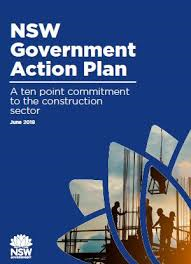The risk project owners fear the most is the only risk that can’t be transferred to a contractor and because of its increasing prevalence, it is leading to a reappraisal of how all other major project risks are managed.
Ever since the Global Financial Crisis (GFC), there has been a trend towards project owners seeking to transfer increasing amounts of risk to the Contractor, often ignoring the first principle of sound risk management that is – ownership of any particular risk should lie with the party best able to manage it.
Why has this happened?
Major project owners crave certainty of outcome, financiers on Public Private Partnerships (PPPs) even more so. The decision whether to proceed with a project is based on certain economic assumptions, estimated out-turn cost being one. Public infrastructure investment decisions often rely on a business case demonstrating a positive cost/ benefit ratio. If the estimated cost is subsequently exceeded a project may cease to be the sound investment it was once thought to be, with significant consequences for the proponents.
In order to ensure that the final cost does not exceed that budgeted, project owners have sought to transfer liability for any and all execution risks to the contractor through increasingly onerous contracts.
Battling to survive in a post GFC world, contractors had little option but to accept these contracts and full risk transfer became the new norm, as did increasing losses as risk contingencies, in a competitive market, rarely covered risk exposure.
The Un-transferable Risk
With little hope of cost recovery and delay damages cap reached, contractors have increasingly sought to mitigate further losses by seeking to reduce remaining project costs often at the expense of progress of the works. With the project delayed and works proceeding at a much-reduced rate, local stakeholders affected by the project, such as residents and business owners, become increasingly restless and then angry.
Their anger is directed not at the Contractor but at the project owner and the owner, whether government, council or company suffers reputational damage. Votes are lost and share prices suffer. In an effort to lesson the damage, contracts are overlooked and deals struck to end the pain. This outcome has increased in prevalence so much so that traditional lump sum hard dollar contracts are now jokingly being referred to as Guaranteed Minimum Price contracts.
As reputational risk cannot be transferred, project owners are increasingly revisiting the ownership of those risks that can.
A Partnership Based Approach
Released in June 2018, the New South Wales Government 10 Point Commitment to the construction sector is an action plan to ensure the ongoing health and capability of the construction sector in order to deliver the new infrastructure required by the State. It includes a commitment to:
Adopt partnership-based approaches to risk allocation.
Whilst the document is generally light on detail as to how the commitments will be met, it lists a number of key principles in respect of a risk partnership approach.
Recognise that not all risks are capable of being fully assessed, priced, managed or absorbed by the private sector, and that such risks must be managed collaboratively- including risks related to utilities, planning approvals and latent conditions. As a matter of principle, risks should be managed by the party best able to manage them, and should be shared where necessary.
Seek the market’s views early in any procurement process, about the extent of the geotechnical and other due diligence that will help to reduce “in-ground” and other risks which are hard to investigate and forecast and provide Government warranties for the factual accuracy of the resulting data.
Develop standard contractual risk-sharing mechanisms for these items which keep both parties appropriately incentivised but do not put the contractor’s overall viability at risk.
The highlighted words signify a significant change in approach from the current standard industry position and one that, if properly implemented, should lead to a more sustainable construction industry, less contractual disputes and more predictable project outcomes.
It remains to be seen however if / how these commitments will be implemented and whether they will be adopted by other State Governments and by federal bodies such as the Australian Rail Track Corporation.
If you are in Brisbane today come along to the following Engineers Australia event where I will be discussing this very subject.
https://www.engineersaustralia.org.au/event/2019/07/ppps-vs-dcs-case-study-inland-rail



